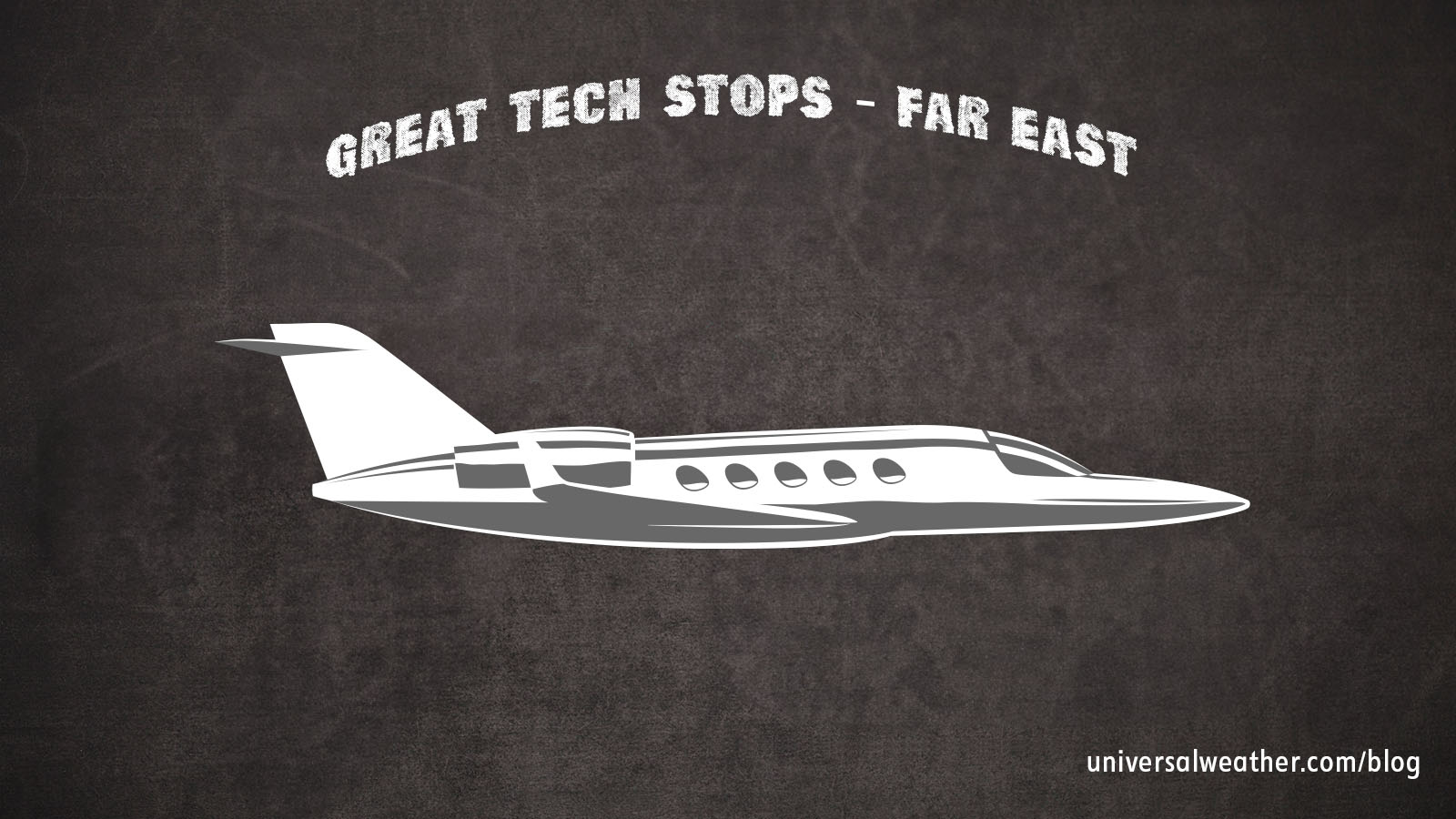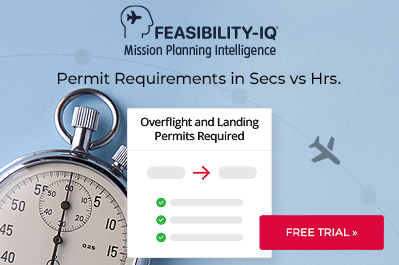6 Great Tech Stops in Northeast Asia for Business Aviation – and Why


This business aviation blog post is part of a series on great technical stops for business aviation.
Many good tech stops exist in Northeast Asia (the “Far East” region) for business-aviation operators. Aircraft range will impact selection of tech stops. However, permits are also an important consideration for this region. You’ll generally have less flexibility when routing through this area due to those permit requirements, with some countries being more stringent than others. Work with your 3rd-party provider in advance to coordinate the best tech-stop options for your trip.
1. What are the top 6 locations recommended for tech stops?
Depending on where you are operating, there may be many good locations for tech stops. These are the 6 we recommend.
Our 6 recommended locations are:
- ✈ Petropavlovsk, Russia (UHPP)
- ✈ Khabarovsk, Russia (UHHH)
- ✈ Incheon, Seoul, Republic of Korea (RKSI)
- ✈ Gimpo, Seoul, Republic of Korea (RKSS)
- ✈ Kansai, Osaka, Japan (RJBB)
- ✈ Taipei, Taiwan (RCTP)
Explanation:
Petropavlovsk, Russia (UHPP) and Khabarovsk, Russia (UHHH) work well on northern routings to and from the United States (U.S.). Jet fuel price is generally lower at UHPP, but weather always needs to be considered for this location. De-icing service is available at both airports. Be aware that Russian fuel type is TS1 rather than Jet A. Also, both UHPP and UHHH require landing permits to operate there.
Incheon, Seoul, Republic of Korea (RKSI) and Gimpo, Seoul, Republic of Korea (RKSS) both offer reasonable costs for quick turns and a fair processing time for landing permits and airport slots. For a tech stop in Japan, we recommend 24-hour Kansai, Osaka, Tokyo (RJBB). However, landing and initial navigation fees can be high at all locations in Japan. To the south, we recommend Taipei, Taiwan (RCTP) as a well-positioned tech stop with lower turnaround costs than Japan.
2. What is the turnaround time for jet fuel?
At both UHPP and UHHH you can generally expect to fuel and turnaround your aircraft in 45 – 60 minutes. At both RKSI and RKSS, plan on up to 60-minute turns and access to more in-flight catering options than in Eastern Russia. At both RJBB and RCTP, turnaround times average 60 minutes, and these are good locations for repositioning crew due to scheduled airline availability.
3. Are operators required to clear customs or have visas for these 6 international tech stops?
Customs will be notified of your arrival, but in many cases you will not have to clear customs or unload luggage at these locations. Visas may not be required for tech stops, but the requirements may change if you are picking up or dropping off passengers. Verify visa requirements with your 3rd-party provider or visa provider. Be aware that RKSS will only accept general-aviation (GA) aircraft with a maximum of 20 seats, including crew without special authorization.
4. What are operating hours at these locations?
RJBB, RCTP and RKSI are 24 hour airports, but RKSS, UHHH, and UHPP have specific operating hours. UHPP normally operates 24 hours a day, but has some closures in 2012 due to work in progress at the airport. Please check with your 3rd-party provider for more information on these closures. Airport hours at RKSS are 0600 – 2300 local, but customs is only available 0630 – 2230 local. UHPP normal operations are open 0900-2000 local time for GA operations, but are 24 hours for tech stops and emergency landings. During the winter, UHHH operates 24 hours a day, except for Tuesday, when it operates 0001-1540 local time. In the summer, UHHH operates 24 hours a day. However, they do have closures through October 27, 2012, so it’s best to check with your 3rd-party provider.
5. Are landing permits, airport slots or prior permissions required (PPRs) required?
Landing permits are required for private non-revenue and charter (non-scheduled commercial) operations to UHPP and UHHH, and the permit lead time is five working days. Landing permits are needed for tech stops at RKSI and RKSS, with seven days lead time. Airport slots for both RKSI and RKSS are necessary with -/+ one hour deviation. RJBB does not require landing permits for tech stops, but you’ll need airport slots and the deviation is -/+ 30 minutes. RCTP requires landing permits for tech stops and 10 days lead time to process the requests (Taiwan Civil Aviation Authority may approve it within that time frame at their discretion). Airport slots for RCTP are only required during peak periods of 0700 – 1000 local, and the deviation is -/+ one hour.
6. Can jet fuel and other services be arranged on credit?
All these locations offer full services. We recommend that everything is arranged on credit to prevent delays for payment during tech stops. Aviation fuel cards are accepted, and it’s best to always carry a copy of your jet fuel release paperwork.
7. Are there any potential issues that operators should be aware of?
For tech stops in Russia, an operator may be faced with weather issues, particularly at UHPP. Be aware of landing permit limitations when making short notice schedule changes. Overflight and landing permits for Russia are usually valid +24 hours, but you won’t be able to depart earlier than the approved landing permit time. If your schedule changes in this region, you may have reduced flexibility in terms of overflight and landing permits. Depending on the destination, some operators set up permits for two different routings when operating to Northeast Asia from the U.S. – one via Russia and another via Japan and Taiwan, as the overflight permits for the latter option are not route specific. Extra permit cost is offset by increased operating flexibility. English proficiency is good at these locations.
8. Are there locations that should be avoided for tech stops?
Operators generally avoid tech stops in China due to landing permit and visa requirements. Japan has higher landing fees compared to other locations in this region, and for this reason, in some cases, operators may avoid tech stops there. Certain airports in Japan are restricted in terms of tech stop flexibility. Sapporo, Japan (RJCC), for example, is only open 0830 – 2100 local, and during winter months will only allow one GA aircraft on the ground at one time.
Conclusion
When flying through Northeast Asia, consider tech stops carefully. Advance notice requirements, permits, slots, and flexibility in schedule revisions must be considered. Within this region, it’s best to avoid too many schedule changes as this can impact permit revisions.
Questions?
If you have any questions about this article, contact Christine Vamvakas at christinevamvakas@univ-wea.com.
Later, we’ll discuss great technical stops for business aviation in Central America.




